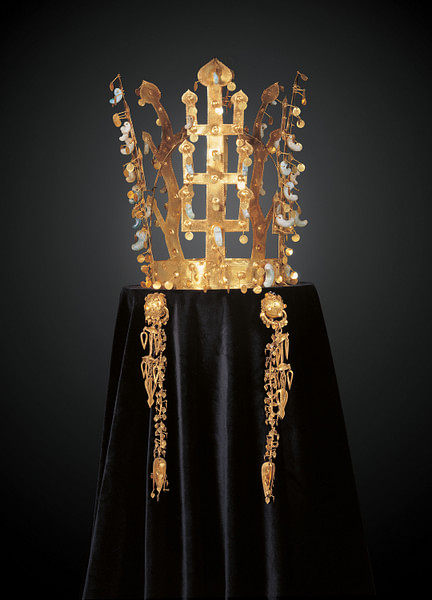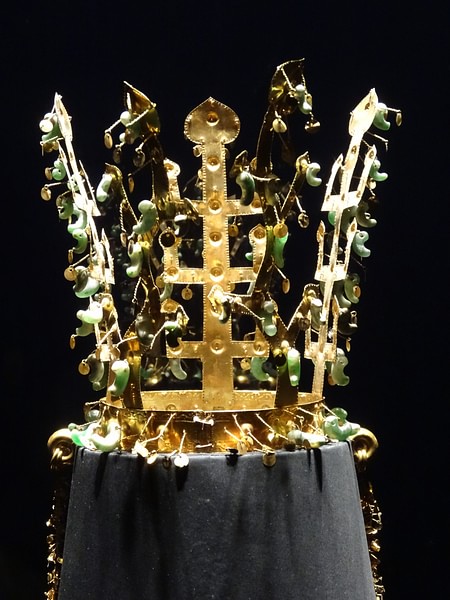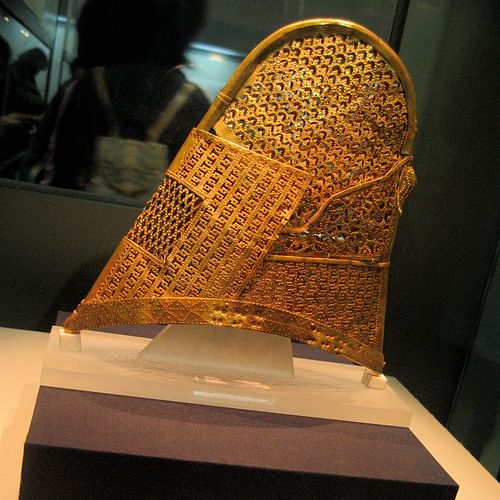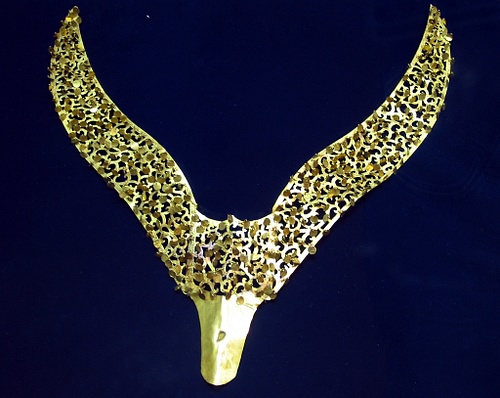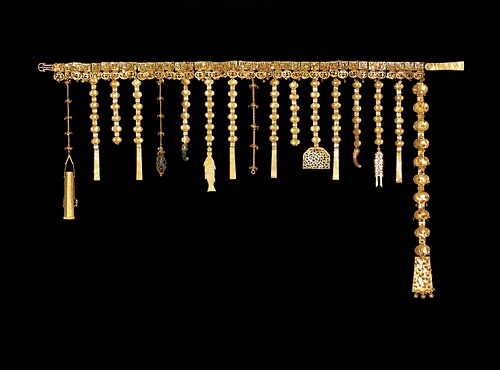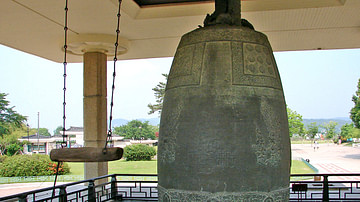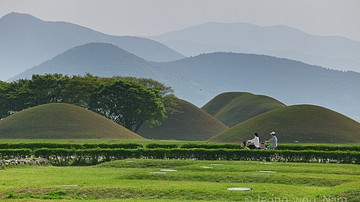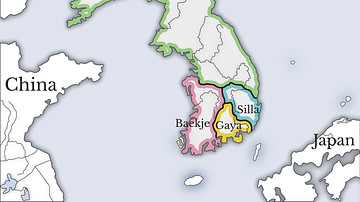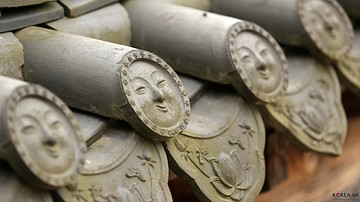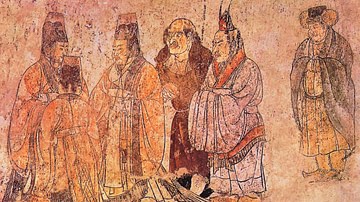The Silla Kingdom ruled south-eastern Korea during the Three Kingdoms period (1st century BCE - 7th century CE) and then, as the Unified Silla Kingdom, all of Korea from 668 to 935 CE. The Silla produced fine pieces of art, but their most celebrated works are undoubtedly the five gold crowns which have been excavated from five royal tombs. These magnificent crowns, and many more fine jewellery pieces too, fully justify the ancient capital's name of Geumseong or 'city of gold.'
Saved for Posterity
The Silla kings and queens were buried at Geumseong (modern Gyeongju) in large earth mounds containing stone-lined tombs. The contents of these tombs were protected from the elements by the technique of applying clay between layers of stones under the earth mound. Even more importantly, though, the riches within were saved for posterity by the Silla architects' decision not to construct horizontal entrances to their tombs as was the case in the other kingdoms of the period. Consequently, the tombs were not looted in antiquity and the riches of Golden Silla were saved for future generations.
The first crown was rediscovered by chance in 1921 CE when a policeman noticed children digging for glass beads in a pile of earth near a construction site in southern Gyeongju. On closer inspection, he saw pieces of gold in the ground and it soon became evident that the site was once a burial mound, which had flattened over the centuries. Excavations began and soon discovered the glittering treasures buried with an occupant now vanished to decay. The tomb was dated to the second half of the 5th century CE and became known as the Gold Crown Tomb. The body inside had been placed in a wooden box wearing a gold crown, girdle, earrings, and rings on the toes. Around the coffin were many other precious objects – lacquer goods, mirrors, ornate stirrups, horse-fittings, weapons, armour, bronze vessels, and ceramics. Four more tombs were then discovered nearby and excavated over the following decades. These are the Great Tomb at Hwangnam, Cheonmachong (the 'Heavenly Horse Tomb'), the Gold Bell Tomb, and the Auspicious Phoenix Tomb.
Crowns: Design & Manufacture
Scholars note some points of similarity, and therefore possible influence on the Silla crown designs, to gold crowns found in the Black Sea area, Bactria, and China. The other two kingdoms of the Three Kingdoms Period (Baekje and Goguryeo) also made crowns, in the latter case using gilt-bronze. The Silla gold crowns generally have three parts probably worn all together: an openwork tall conical cap, a piece in the form of a wing or butterfly which fitted into the cap, and a diadem.
The diadems are fitted with tall upright antlers (at the sides) and tree-like formations with U-shaped branches (at the front), which indicate a link with Scytho-Siberian shamanism. Hanging from the side of the crown are chains with pendants. The diadems are around 30 to 45 cm (17 inches) tall. Made of thin pieces of cut sheet-gold they are embellished with granulation, punched dots, rivetting, filigree, suspended disks or spangles, and pendants of twisted gold wire decorated with crescent-shaped pendants of jade (gogok in Korean or magatama in Japanese). The latter are similar to those found in Japanese tombs belonging to the Kofun period (4th-6th century CE) and symbolise new life. The gold crown from the Auspicious Phoenix Tomb is topped with a phoenix (or perhaps the three-legged crow from Chinese mythology which represents the sun). This crown, instead of an inner cap, has two arched bands crossing between the main outer band.
Two gold caps, one from the Heavenly Horse Tomb and another from the Gold Crown Tomb are similar in design. Both are around 18 cm in height and made from four separate gold sheets which display various intricate open-work patterns. The sheets are joined together by gold rivets and wiring. A third cap, this time in silver and gilt bronze, is less ornate and was excavated from the Great Tomb at Hwangnam.
Some crowns have feather or wing-like decorations, which suggest the importance of birds in Silla culture, a fact corroborated by Chinese records (the San-kuo-chih or 'History of the Three Kingdoms') noting that the cultures prior to the Silla kingdom buried bird's wings with their dead. In shamanism, which was prevalent in early Korea, wings are associated with flight in the spiritual world. For this reason, some scholars suggest that the stag-like pieces on the crown diadem are also stylised bird's feathers. One wing-like decoration from the Heavenly Horse tomb measures 45 cm across and is decorated with over 400 tiny spangles individually attached with gold wire.
Such is the magnificence of the crowns and other pieces buried with the dead that some scholars have pointed out that they could only have been created for that purpose while others point out the wear and tear on some pieces which suggests they were actually used during the lives of the tombs' occupants.
Jewellery Pieces
The Silla tombs contained not only crowns but all manner of gold jewellery such as earrings, chain necklaces, girdles, and even shoes and caps, which would have been silk-lined for greater comfort. There are also a staggering 20,000 glass beads recovered from the tombs. Earrings can have a distinctly thick, hollow, tubular upper part from which hang pendants, for example in the form of a cluster of leaves either plain or with pale blue glass additions, glass beads or carved jade pieces. Other earrings have a thinner but solid ring from which hang pendants. It is interesting to note that earrings were worn by both male and female occupants of the tombs. Gold bracelets are generally plainer affairs with simple notching on the outer edges.
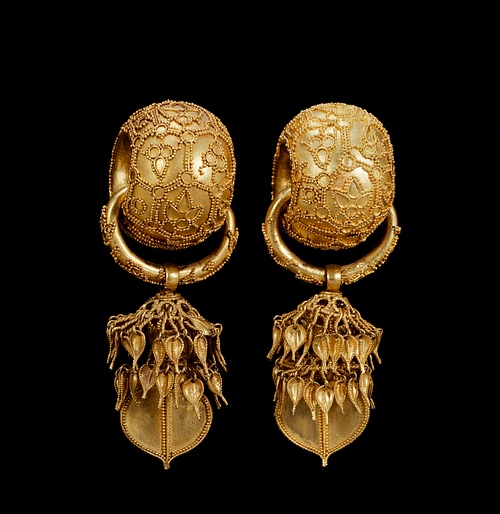
The girdles, perhaps influenced by the Chinese Han Dynasty, have pendants of various lengths and design. The most outstanding example is from the Gold Crown Tomb, which has 17 miniature pendants. These include a sheathed knife, fish, tassel, a container for acupuncture needles, tweezers, symbolic whetstones, a perfume bottle in glass with a gold-wire cage, scissors, and curved jade pieces. The pendants represent essential objects associated with and worn by government officials as mentioned in the Tang Dynasty history, the Tang-shu. This tradition was probably based on the practice of nomadic tribespeople wearing tool belts. The belt itself is made from 39 gold openwork plaques (originally fixed to a cloth or leather backing) with a buckle and thong to attach it. The floral designs and woven chains of the girdle show a Chinese influence, probably brought via Baekje, the contemporary kingdom in the south-west of Korea.
The crowns and many jewellery pieces feature prominently on the official list of National Treasures of Korea, and many can be seen today in the National Museum of Korea, Seoul and the Gyeongju National Museum. The British Museum in London also has some examples of gold earrings from the Silla tombs.
Unanswered Questions
There are still many unanswered questions regarding the five Silla crowns. One of those is who actually wore them. A king would seem an obvious answer, but the crowns all date to the mid-5th to mid-6th century CE, a period in which the Silla had only four kings. There may be many more crowns to be discovered, indeed, this seems likely as another 155 tombs are known in the Gyeongju area and 80% have yet to be excavated. It would seem then that not only kings were buried with crowns. Further, a gold belt in the Great Tomb at Hwangnam has an inscription which reads 'lady's belt' suggesting the occupant was a queen. Then there is the smaller size of objects in the Gold Bell Tomb and the smaller diameter of the crown (16.4 cm compared to around 20 cm for the others) which might indicate the occupant was a young prince. It is also the only crown without jade decoration. Could this be significant? As with so many other mysteries of ancient history, perhaps only time will tell just who was buried with the gold crowns of Silla and who had the right to wear them when alive.
This content was made possible with generous support from the British Korean Society.
